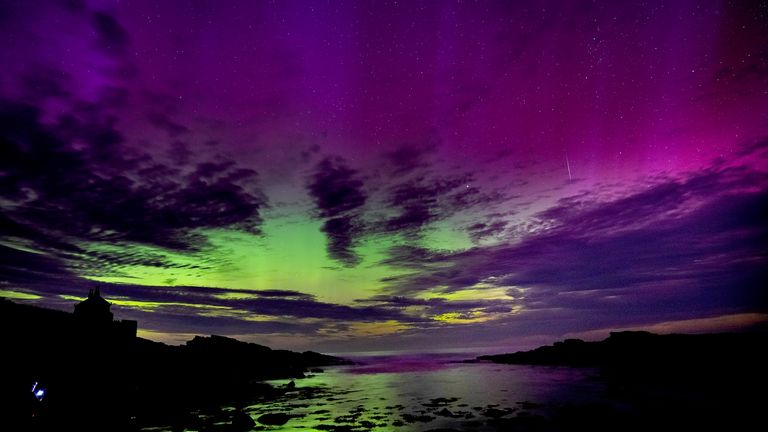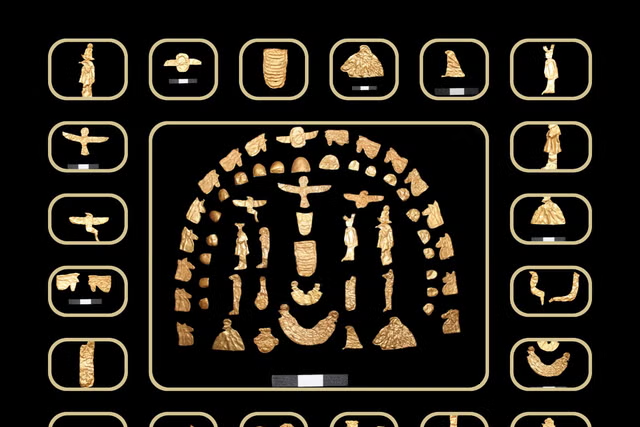A rare supermoon is about to light up the night sky, the first in a series of four over consecutive months.
The August full moon, sometimes called the Sturgeon moon, will shine more brightly and appear larger than normal on August 19.
The September, October and November full moons will also be supermoons, in an unusual astronomical quadruple feature.
The last full supermoon occurred nearly a year ago, on September 29, 2023.
How to See the August supermoon
The moon will hit its fullest point at 2:26 p.m. ET on the day, but the moon will be on the other side of the Earth to the U.S. at that point, so hopeful viewers will have to wait a few hours until moonrise.
On the U.S. East Coast, the supermoon will rise at about 8 p.m. local time, towards the east-southeastern skies, rising about one-third of the way through the sky before setting at about 7 a.m. in the west-southwest.
The supermoon is typically most impressive at moonrise or moonset, when it is near the horizon, due to an optical illusion.
"During the twilight, the residual solar light scattered all around by our atmosphere allows us to admire the scenery, while the full moon rises or sets," Gianluca Masi, an astronomer from the Virtual Telescope Project, previously told Newsweek.
"Furthermore, at its rise and set the moon appears behind monuments and elements of the landscape, generating the feeling that its disk is larger than usual. But this is just an optical illusion resulting from the presence of those terrestrial elements in the line of sight that our brain uses for comparison."
The moon should be easily visible all night across the U.S., unless the weather is overcast. Find a location with a clear view of the horizon, such as a beach, hill, or open field. Trees, buildings, and other obstacles can block your view. If possible, go to a location away from city lights. The darker the sky, the more brilliant the moon will appear.
While you don't need any equipment to enjoy a supermoon, binoculars or a telescope can help you see more details on the moon's surface, such as craters
What Is a Supermoon?
The term supermoon is not a scientific term, but rather a popular term that was coined by astrologer Richard Nolle in 1979 to refer to full moons that coincide with the moon's closest point to our planet.
The moon doesn't orbit us in a perfect circle, instead going around in a slightly oval or elliptical shape. Supermoons are full moons—or new moons—that occur when the moon is at its closest point to the Earth in this orbit, also known as its perigee. Nolle—seemingly arbitrarily—defined a supermoon as being within 90 percent of perigee.
During a supermoon, the moon appears up to 14 percent larger and 30 percent brighter than when it's at its farthest point (apogee). This is about the same proportional difference as the difference in sizes between a nickel and a quarter. Compared to an average moon, a supermoon is about 8 percent larger and 15 percent brighter.
During perigee, the moon is about 226,000 miles away from us on average, compared to apogee, where it is about 253,000 miles away.
Supermoons can happen multiple times a year because the timing of the moon's orbit and its phases often coincide, however, some supermoons are more "super" than others, depending on how closely the full moon aligns with perigee. Additionally, sometimes perigees are closer and further away, depending on the shape of the moon's orbit at the time.
The supermoon that occurred in November 2016 was the closest the moon had come to us since 1948, with the closest full supermoon of the 21st century forecast to occur in 2052.
What Is the Sturgeon moon?
The name Sturgeon Moon comes from Native American tribes, who named each full moon to reflect activities or natural events that were important to them during that particular time of year.
The August full moon was named the Sturgeon Moon because it coincides with the time of year when sturgeon fish were historically most plentiful and easiest to catch in the Great Lakes and other major bodies of water in North America.
The January full moon was called the Wolf Moon, the March moon the Worm Moon, and the September moon the Harvest Moon.
Do you have a tip on a science story that Newsweek should be covering? Do you have a question about supermoons? Let us know via science@newsweek.com.
Disclaimer: The copyright of this article belongs to the original author. Reposting this article is solely for the purpose of information dissemination and does not constitute any investment advice. If there is any infringement, please contact us immediately. We will make corrections or deletions as necessary. Thank you.



